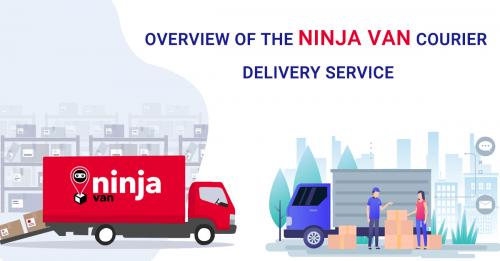Things to Remember before Creating an On-Demand Grocery Delivery App
The incoming of eCommerce websites reformed the product industry, the same was done by the advent of Uber for X business model. Earlier we couldn’t enjoy the luxury of ordering whatever we wanted right from our homes. If you observe the timeline, the concept of on-demand apps surfaced way before smartphones became a part of our day-to-day lives.
Over the years apps and smartphones found the right combination and created a whole new business economy. With the challenges are thrown by the covid crises, consumers grew prone to using on-demand services. So what are these marketplaces doing to create such high revenue-generating businesses?
This blog offers valuable learnings on how delivery apps are conquering different industries and insights into the on-demand grocery delivery market. If you’re willing to invest in the on-demand grocery delivery business, this blog is just the right fit for you.
Overview: Uber for X Concept
All the on-demand app development services we are enjoying are today are a by-product of the giant Uber’s business model. You can call it the superset of the on-demand economy. The business model is powered by the exchange of services or products between buyers and sellers or customers and service providers. But unlike the conventional marketplaces, this service requires instant delivery of goods or services.
An UberEats consumer demands food delivery at their home while a Uber user demands a cab for transportation. The two important questions that the on-demand services look for answers for are when and where most importantly when. If you’re in dire need of a babysitter and if s/he shows up the next day, it completely beats the point.
The same concept has been adopted by the on-demand grocery delivery platforms. For instance, Uber aggregates different drivers and provides services, on-demand grocery delivery platforms strike deals with different grocery store owners and food chains in different localities.
To enter the on-demand grocery delivery market you would need to create a mobile app that would act as your marketplace. In addition, you’d have to strike deals with local grocery store owners and food chains and have a delivery fleet that would complete the process by delivering the ordered products.
You would have to create 3 user apps and an admin app to run the on-demand grocery business. Let’s understand the features of a customer app by classifying the app into different segments.
Features of On-Demand Grocery Delivery App for Consumers:
User Registration and Profile Features:
Sign-up
Sign-in
Social Media Login
Forget password
User profile
Edit & Update Profile
On-Demand App Features:
Advanced Search
Filters
Dashboard
Payment gateway
Add to cart & Checkout
Discount Coupons
Location Features:
Add/Manage Addresses
Customer’s GPS location
Time slot & Date selection
Real-time tracking
Delivery Agent Details
User Reviews:
Rate products
Delivery agent ratings and reviews
Communication Panel
Help and Support
FAQs
Benefits of On-Demand Grocery Delivery for Consumers:
Ease of Access:
The convenience that these apps invite into user’s lives is unprecedented. Now the users don’t have to travel a long distance, shop physically, and wait in queues to make payments. The service is a boon for time-poor families and individuals. They can order from anywhere at any time and the order will be delivered right at their doorsteps.
Quick Services:
What started with the on-demand cab-hailing service spread like a plague in many different industries. Users today want their services to be quick, especially Millenials. The on-demand platforms serve just that and that too within a few taps. The idea is to promote quick services while investing minimal effort and time.
Shop for Everyone:
Imagine yourself going to a grocery mart to buy a month’s groceries. Using the conventional service you won’t prefer buying groceries for anyone else but yourself. But the on-demand services offer the provision of exercising this convenience.
Now you can help your friend in need or an aunt who is sick by shopping groceries for them and getting them delivered at their doorsteps.
Prevents Impulsive Buying:
It’s always a pickle to remember, choose, and buy all the groceries you need at once. When buying, many times we end up buying things thinking we would need them when we actually don’t. This happens because we don’t wish to make a return trip to the same place doing the same task. On-demand apps free you of that burden. Even if you make an order every day it will be delivered to you at the promised time.
Budget-Friendly Service:
An on-demand grocery delivery service eliminates many middlemen who received cuts. This helps the platform to provide its users with discounts and offers around the year. As you start ordering on a regular basis the app’s algorithm eventually offers you personalized discounts and offers.
There are different types of on-demand grocery stores that have captured various niches. Let’s learn a bit about them in brief.
Types of On-Demand Grocery Apps in the Market:
Aggregators:
Aggregators offer a platform to all the grocery stores in a particular area, city, or state. They strike deals with independent grocery vendors and food chains and connect them with consumers. Their app offers a list of grocery stores to choose from, each store with its individual menu and rates. The user can select their needed products and add them to their cart. The delivery of the products still remains the responsibility of the store owners.
Marketplaces:
A marketplace is similar in its approach to the grocery vendors but it also offers their team of delivery agents to deliver the orders to the consumers.
Single Stores:
In a single store, starting from creating the app to making the delivery, everything is taken care of by the store owners. They do charge a commission or convenience charge to get the products delivered. The app maintenance and delivery agent’s salary is also taken care of by the store owner.
Grocery Chains:
These are large food chains such as Walmart or Big Basket. They tend to have their own inventory of groceries and a fleet of delivery drivers. They establish their stores in various countries and not only states.
Afterword:
Above we learned how the Uber for X business model has been adopted by the grocery industry and the benefits it holds for the users. Consumers around the world are adapting themselves to the new wave of tech and on-demand services. Investing in the same can prove extremely beneficial for your grocery store. If you don’t own a grocery store creating a marketplace for the same also has tremendous business potential.
All you have to do is get in touch with an experienced mobile app development company. Who offers all types of technical IT services right from the inception of an idea to its launch.




Comments